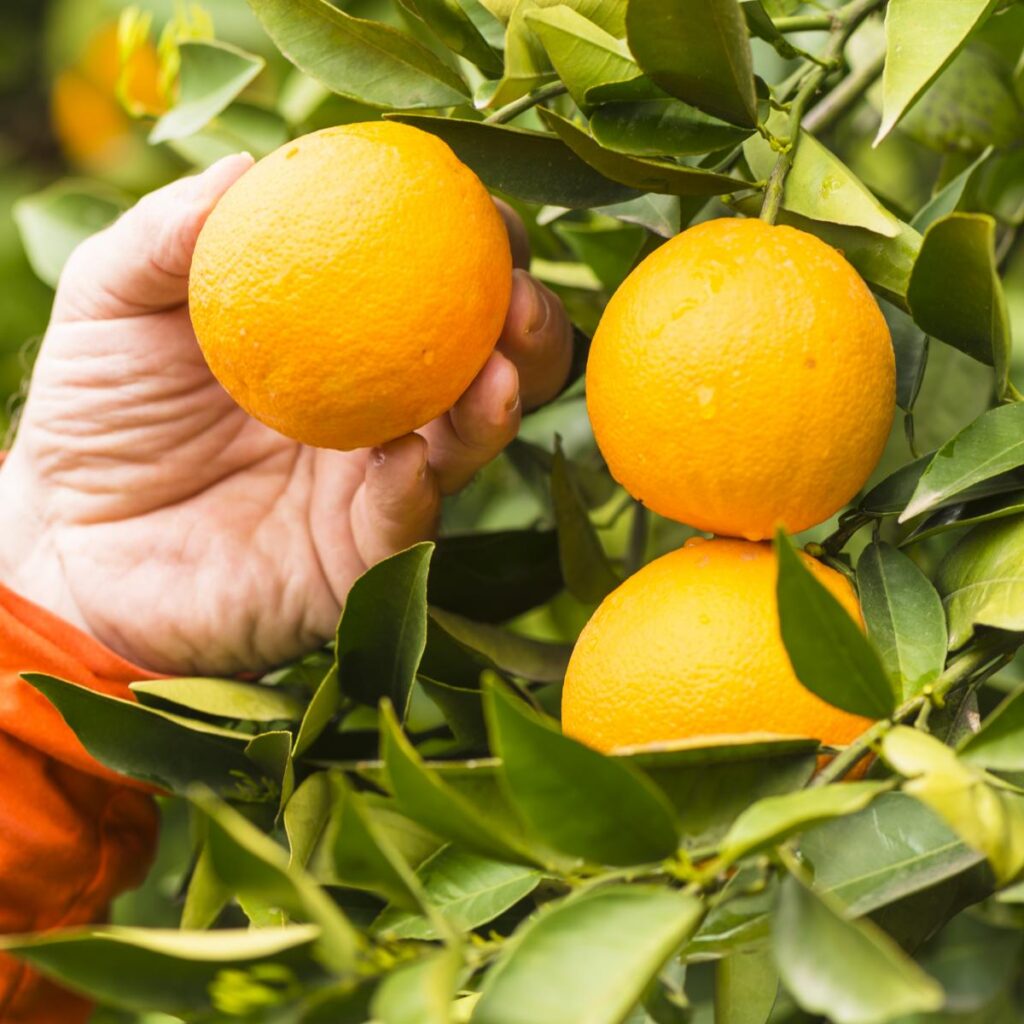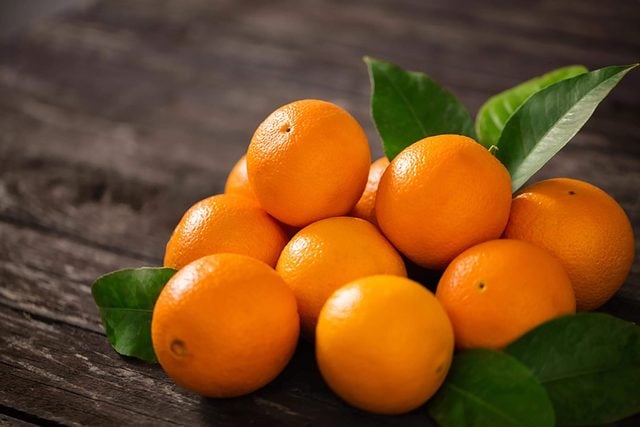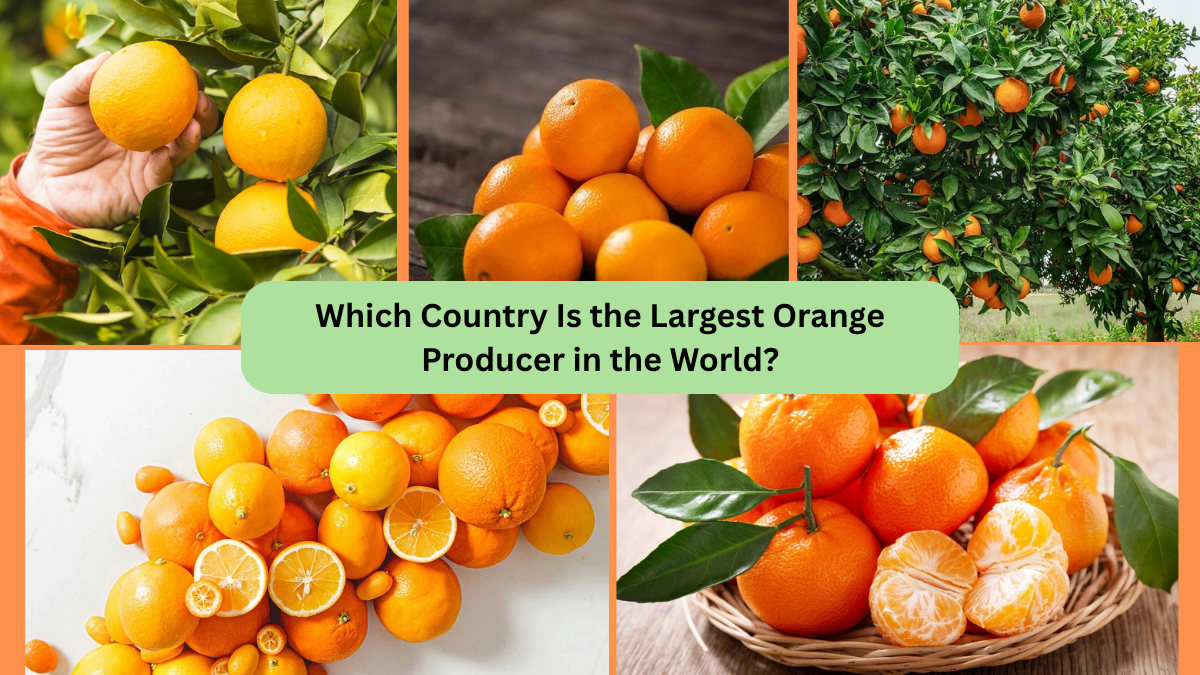Introduction: The Universal Love for Oranges
Oranges are one of the most popular and widely consumed fruits globally, cherished for their bright color, refreshing flavor, and rich nutritional value. Whether enjoyed as a fresh snack, squeezed into juice, or used in desserts, salads, and marmalades, oranges have become a staple in countless households and cultures. Their popularity isn’t just about taste — oranges are also packed with vitamin C, fiber, antioxidants, and essential minerals, making them a favorite for health-conscious consumers.
But have you ever wondered which country grows the most oranges in the world? While oranges are cultivated in various regions across Asia, Africa, the Americas, and Europe, one country consistently leads the charge in orange production. In this article, we’ll explore which nation claims the title of the world’s largest orange producer, look at other major contributors, and discover fascinating facts about global orange farming.
The Origin and Global Spread of Oranges

Before we delve into production rankings, let’s appreciate the history of this vibrant fruit. Oranges are believed to have originated thousands of years ago in Southeast Asia, particularly in regions of India, Vietnam, and southern China. Through trade routes and colonization, oranges made their way to the Middle East, North Africa, and Europe, eventually spreading to the Americas during the Age of Exploration.
Today, oranges thrive in subtropical and tropical climates, requiring plenty of sunshine, moderate rainfall, and well-drained soils. The global demand for oranges has been fueled not only by their taste and versatility but also by their health benefits and the massive worldwide market for orange juice.
Global Orange Production: An Overview
The global orange production market is immense, with over 75 million metric tons produced annually. Oranges are cultivated in over 140 countries, but the majority of production comes from a handful of nations with favorable climates and well-established citrus industries.
Leading the way is a country synonymous with citrus farming and famous for its orange juice exports. Let’s find out who holds the crown.
Brazil: The World’s Largest Orange Producer

Brazil is the undisputed largest producer of oranges in the world, contributing a significant portion of the global orange supply each year. The country’s vast, fertile lands and tropical climate make it ideal for large-scale citrus cultivation.
Why Brazil Leads:
- Perfect Growing Conditions: Warm temperatures, rich soils, and abundant rainfall in regions like São Paulo, Minas Gerais, and Paraná offer the perfect environment for orange groves.
- Year-Round Harvests: Brazil enjoys extended growing seasons, enabling multiple harvest cycles annually.
- Industry Focus on Juice: While many countries grow oranges for fresh consumption, Brazil produces a large proportion of its crop for orange juice processing.
- Export Powerhouse: Brazil is the leading exporter of frozen concentrated orange juice (FCOJ), supplying major markets in Europe, the United States, and Asia.
Production Numbers:
Brazil produces approximately 17 to 19 million metric tons of oranges per year, accounting for nearly one-fourth of global production. Its leadership position is bolstered by a well-organized, export-driven citrus industry and massive orange groves spanning thousands of hectares.
China: Asia’s Leading Orange Grower
China ranks as the second-largest orange producer globally, thanks to its enormous agricultural sector and rapidly growing domestic market.
Key Growing Regions:
- Jiangxi, Hunan, Guangxi, Sichuan, and Guangdong are among China’s major citrus-producing provinces.
Industry Highlights:
- High Domestic Demand: Most of China’s oranges are consumed within the country, meeting the dietary preferences of a massive population.
- Diverse Varieties: China cultivates a wide range of oranges, including Navel Oranges, Mandarin Oranges, and Sweet Oranges.
- Market Growth: Rising incomes and health awareness have increased demand for fresh fruit and fresh-squeezed juice.
China produces between 8 to 10 million metric tons of oranges annually, solidifying its position as a citrus giant in Asia.
India: A Rising Citrus Star

India is rapidly emerging as a major orange producer, ranking third in global orange production.
Major Cultivation Zones:
- The states of Maharashtra, Madhya Pradesh, Punjab, Rajasthan, and Assam are key orange-growing regions in India.
Industry Strengths:
- Strong Domestic Market: Oranges are widely consumed fresh in India, especially during winter.
- Famous Varieties: The Nagpur Orange from Maharashtra is renowned for its rich sweetness and juiciness.
- Seasonal Harvests: India’s varied climate enables staggered orange harvesting seasons across different regions.
India contributes around 7 to 8 million metric tons annually, and with growing domestic demand and potential for increased exports, its citrus industry is expanding quickly.
United States: North America’s Citrus Leader
The United States, particularly Florida and California, has long been a major player in the global orange market.
Key Growing Regions:
- Florida: Specializes in orange juice production.
- California: Focuses on fresh market oranges.
Industry Highlights:
- Orange Juice Icon: Florida was once synonymous with orange juice, although production has declined in recent years due to diseases like citrus greening.
- High-Quality Fresh Oranges: California oranges are famous for their superior quality, long shelf life, and bright color.
The U.S. produces approximately 4 to 5 million metric tons of oranges annually, supplying both domestic and international markets.
Egypt: A Fast-Rising Orange Exporter

In recent years, Egypt has emerged as one of the top orange producers globally, quickly rising through the ranks.
Key Advantages:
- Fertile Nile Delta soil and plentiful sunshine allow for ideal growing conditions.
- Export Focus: Egypt has become one of the top orange exporters to Europe, Russia, and the Middle East.
Egypt produces roughly 3 to 4 million metric tons annually, with much of it destined for export markets.
Global Orange Market Trends
The global orange market is dynamic and influenced by factors such as weather patterns, diseases, changing consumer habits, and international trade policies.
Current Trends:
- Rising Health Awareness: Oranges are increasingly valued for their high vitamin C content and immune-boosting properties.
- Growth of Fresh Juice Markets: The popularity of fresh, cold-pressed orange juice is rising globally.
- Challenges from Citrus Greening Disease: This devastating disease has affected production in Florida and Brazil, impacting both yields and prices.
- Export Market Expansion: Countries like Egypt, Turkey, and South Africa are increasing exports to new international markets.
Conclusion: Brazil’s Reign as the Orange King

To conclude, Brazil stands tall as the largest orange producer in the world, supplying a significant portion of the global market and dominating the orange juice export industry. Its favorable climate, expansive citrus groves, and efficient agricultural practices ensure its continued leadership.
Close behind are China, India, the United States, and Egypt, all playing critical roles in meeting global orange demand. As health trends continue to spotlight vitamin C-rich fruits and orange-based products, these nations are expected to expand production and strengthen their positions in the global citrus trade.
Whether enjoyed fresh, juiced, or as part of a savory dish, oranges remain one of the world’s favorite fruits — and thanks to countries like Brazil, the supply of this juicy treasure shows no signs of slowing down.





